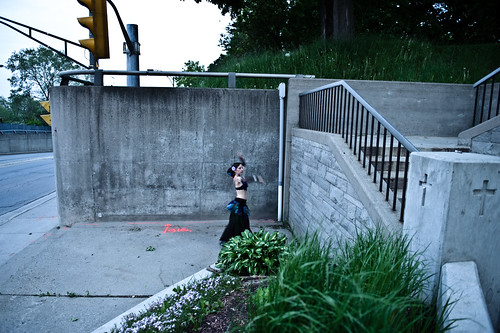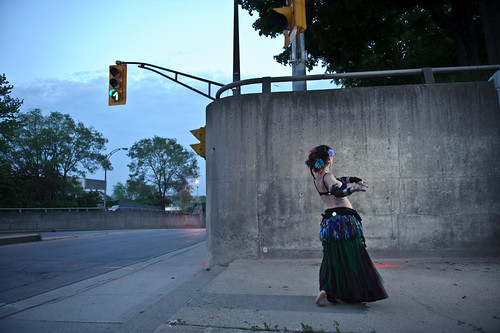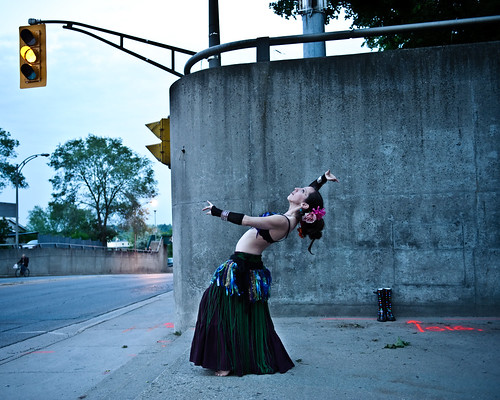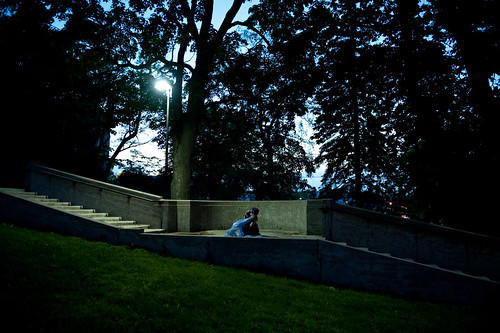What’s the Jackanory has a fantastic studio tour-slash-interview with Phillip Toledano up. I think I’ve developed a bit of a crush on Mr. Toledano, truth be told. First, I had no idea he was British, and I’ve always had a soft spot for a nice accent. Somehow from his pictures I expected him to be brasher, like a stereotypical New Yorker or something, with darker hair and a wider middle. But apparently he’s actually cute and charmingly self-deprecating, and I was especially pleased to hear him say that he thinks most of his pictures are total shit for at least a 36-hour period. Anyways, go watch it.
Monthly Archives: June 2009
word to the wise
To people who use Adobe Lightroom to process and manage their photos:
You know how the program prompts you to back up the catalogue? You should really do that. And if you’ve had a particularly productive week, sorting, selecting, and processing from thousands of photos? You might want to back up the catalogue every day or so. Because if you have a power outage while you’re working in Lightroom, the catalogue could be corrupted and unrecoverable. Which means you still have your raw images, but all the sorting, tagging, rating, and processing you’ve just done? Will be gone.
I’m just sayin’.
thoughts on community
My friend Beck wrote a post a while back about community and how they can’t really be built. They’re organic. Jennifer responded with some of her own thoughts. I’ve been thinking a lot about the idea of community and its absence lately on a number of fronts. I blame the rise of the nuclear family. I remember reading about research (I can’t remember where for sure but I think it was in Sheila Kitzinger’s Ourselves as Mothers) that found in cultures where people lived close to their extended families, new mothers wanted mostly to parent just like their mothers. But in cultures like North America, where adult children move far away from their parents because, as Beck says, “moving away is what we do now,” new mothers generally want to do the opposite of what their mothers did.
The benefit of the extended family model, I’m guessing, would be more support for parents and in particular mothers. But that system also perpetuates the status quo and supports (depends on?) rigid gender roles. The benefit of the North American nuclear family is that it affords significant social change – probably an essential ingredient for the women’s movement. But it also makes for instability and uncertainty on an individual level.
It struck me reading Beck’s and Jennifer’s posts that it also makes it very difficult to forge real-life communities. Because there are as many different ways to raise children as there are parents, I feel like I can never step in and parent other people’s kids. And while I would welcome someone else stepping in from to time to parent my kid (like if he misbehaves at the playground), I wouldn’t care for it at all if it doesn’t align with my values and approach to parenting.
For the last several months I’ve been working on a book of some of the images I made and words I wrote during my son’s first two years of life. I’ve been remembering how angry I was, especially at parenting books with their prescriptive tone, contradictory advice, and dire consequences if I didn’t follow their instructions to the letter. But the only reason there’s so darn many of them, and so much need (I remember clearly my desperation to find some kind of solution to my son’s sleeping issue – little did I know the solution would be accepting that I can’t control it), is because of our lack of community. As much as I love my mother, I couldn’t always trust her advice because she got duped herself as a young mother by the parenting book industry. And I didn’t have any close friends with kids who were enough older than my son to offer comfort but not so much older that they couldn’t remember the reality of life with an infant. And so my husband and I struggled, and I made bleak photographs, and the three of us survived.
* * *
Ever since the workshop with Donald Weber, when he said that you need to know what you have to say and that takes time (and how he’s figured out that his work is all about power and the wounds it inflicts on those who don’t have it), I’ve been wondering what my own work is all about. And my initial thinking is that it’s all about community, or the lack thereof. More specifically, I think I could drill it down to being all about the rise of the nuclear family and its impact on society.
For my first volunteer shift at the Drop-In Centre, I was also in need of its services: one of my family members had been evicted the night before and was homeless. The thing about mental illness is that family cannot come together in the same way you can with physical illnesses – if you try, the mental illness will suck you all in. Sometimes I am ashamed at my distance from my family member, and I wonder if people around her wonder where her family is and what’s wrong with us that we aren’t doing more to help. The fact is there is a limit to how much hardship and distress a single nuclear family can withstand and overcome. I believe this may very well be the case for everyone who comes to the drop-in centre: the woman with a chronic disease who didn’t want me to photograph her because her family disapproves of her coming there but she keeps coming nonetheless; and the man whose mother is in a nursing home a few hours away and the man whose daughter will soon be moving in with him, and the man who walked here from the east coast, and the man whose daughters thought he was dead for the last decade, and the boy whose parents dropped him off to stay at the shelter, but stayed to eat a meal with him before they left. There is a limit to what one family can do, and places like the Drop-In Centre fill in the gaps.
I think this is also very much the subject of my Two-Powered series, which I have yet to unveil here – the photographs I made during the first two years of my son’s life that are darker than I remember. My parents were wonderful, but if the nuclear family hadn’t taken over our culture, I would have had no need for parenting manuals, and struggle to reject them and find my own path. Don’t get me wrong: my family is wonderful and they were very supportive during my orientation into motherhood, especially my mother. But I live two hours away from them, and there is a limit to what one family can support. Moving away is what we do now.
My belly dancer series gets a little more difficult to link in, but I believe it’s there. That I can’t articulate the link is probably the reason I’m making those photographs instead of writing about it. I started belly dancing when I most needed community, and it played a significant role in me overcoming severe anxiety and panic. Visually, the photographs are probably more about isolation than community, but the act of photographing these women has revived that part of my community. Yet I photograph them mostly alone and a bit overwhelmed, visually, by their harsh surroundings.
I’m shocked at how my camera, or perhaps more accurately, my compulsion to photograph people, is widening my community. I’ve said it before in relation to the Drop-In Centre, but I’ll say it again because it’s important. Photographing people deepens my encounters with strangers or near strangers. The other day, I found Nadia Sablin’s website, which has some beautiful photography. In book five, she shows “Portraits of friends and strangers. And strangers that have become friends,” which I thought was bang-on.
My newest project, still very much in its infancy, involves photographing original owners of houses in the neighbourhood we moved into last fall. The suburb was built mostly in the 50s and 60s, at the same time as the nuclear family rose to power in North America. So I’ve been going door to door to find original owners. Now, when I walk to work in the mornings or to the playground in the evenings, I know some of the people I’m passing, and we wave in a neighbourly way. I wouldn’t have otherwise met them were it not for my compulsion to photograph. Nothing else could make me knock on strangers’ doors – certainly not needing a cup of sugar or a sympathetic ear. But already I feel like this project could lead to the possibility of living near friends.
new belly dance pictures
good news and bad news
Ugh. I’ve had two separate illnesses within 7 days of each other, and sadly on my days off. Which means I’ve badly neglected this space. Sorry.
Self-doubt is a funny thing. Every two weeks I go to a discussion/critique group that Trina Koster facilitates, and I leave feeling pretty good about my photography. But during the intervening two weeks of web surfing and shooting, I realize my work sucks and I have a long, long way to go. Then I go to the discussion group and feel good again. Rinse, repeat. Too much self-doubt paralyzes but I suspect there’s a basic amount required to get better at your craft.
Anyways, I clicked over to Deep Sleep Magazine and discovered that they published some pictures from my Lunenburg Parking Meters series for their Alien issue! Which I find VERY exciting. When I submitted them, and even when I was notified they made the shortlist, I didn’t think they’d actually make it through.
The editor’s note mentions “disagreement and controversy about the final selection, with a couple of stories in particular (you will have to guess which) producing violently opposed reactions of the “I love these” / “they suck” variety.” So of course I immediately decide they’re talking MY story. Unfortunately, I’ll never know for sure. Anyways, I’m pleased as punch to have my work included. Thanks, Deep Sleep!





